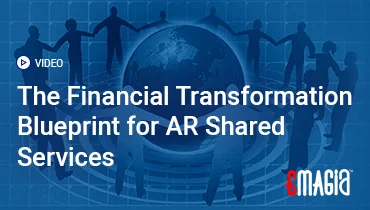The rise of Automated Debt Collection is transforming how businesses recover debts. By integrating debt collection automation software, AI debt collection tools, and automated payment reminders, organizations are improving efficiency, compliance, and cash flow while reducing human errors. In this comprehensive guide, we explore how automation is reshaping the debt collection landscape and what businesses need to know to succeed.
Understanding Automated Debt Collection
Automated debt collection uses technology to streamline the debt recovery process. This includes leveraging AI-powered debt collection, debt collector task automation, and robotic process automation in collections to handle tasks faster and with higher accuracy.
The Evolution of Debt Collection
The shift from manual collection to automation has been driven by the need for efficiency, compliance, and better debtor experiences.
Core Components of Debt Collection Automation
- Automated payment reminders
- Debt recovery automation
- Multi-channel debt collection communication
- Real-time debt tracking
- Debt collection workflow automation
Benefits of Automated Debt Collection
Implementing automated debt collection brings significant advantages, including:
- Faster recovery rates
- Reduced operational costs
- Improved debtor engagement
- Enhanced compliance with debt collection regulations
- Data-driven decision-making through predictive analytics
Debt Recovery Automation Advantages
Automation increases efficiency by reducing manual work and speeding up the payment cycle.
Improved Compliance Through Automation
Debt collection compliance automation tools ensure that communication adheres to legal frameworks and avoids costly fines.
Key Features of Automated Debt Collection Software
- Debt segmentation and scoring
- AI chatbot for debt collections
- Automated debtor communication
- Payment negotiation automation
- Collection analytics and reporting
- Automated legal debt enforcement
AI-Powered Debt Collection Tools
AI tools enhance collection strategies through intelligent prioritization and personalized communication plans.
Debt Collection Workflow Automation
Workflow automation allows seamless coordination between collections teams, reducing delays and improving recovery outcomes.
How Robotic Process Automation Transforms Debt Collection
Robotic process automation (RPA) enables the automation of repetitive tasks, such as sending reminders, logging payments, and updating records.
Automated Follow-Up for Overdue Payments
Follow-ups are automatically triggered based on rules, ensuring timely reminders without manual intervention.
Multi-Channel Communication Strategies
Automation platforms integrate phone, email, SMS, and portal messaging to reach debtors efficiently.
Real-Time Debt Tracking and Analytics
Real-time debt tracking gives collections teams live insight into payment progress, enabling faster dispute resolution and strategic decision-making.
Collection Analytics and Reporting
Detailed analytics help track performance metrics such as recovery rate, days delinquent, and debtor responsiveness.
Challenges in Implementing Automated Debt Collection
- Integration with existing systems
- Ensuring compliance with laws like FDCPA and GDPR
- Maintaining customer trust
- Training staff to use automation tools
Risk Mitigation in Automated Debt Collection
Compliance automation tools help manage regulatory risks effectively.
Best Practices for Automated Debt Collection
- Choose scalable debt collection automation software
- Customize communication to debtor segments
- Integrate predictive analytics for smarter decisions
- Track and refine workflows continuously
- Maintain transparency with debtors
Optimizing the Debt Collection Strategy
Using analytics and automation together ensures maximum recovery while preserving customer relationships.
How Emagia Helps
Driving Financial Recovery with Intelligent Automation
Emagia provides advanced credit and collections management software that integrates debt collection workflow automation, AI-powered debt recovery, predictive analytics, and compliance tools into a unified platform. Our solution enables companies to reduce days sales outstanding, improve debtor communication, and optimize their collections strategy while ensuring compliance with global regulations.
FAQs on Automated Debt Collection
What is automated debt collection?
Automated debt collection uses technology to streamline and improve debt recovery efficiency through AI, automation, and real-time analytics.
How does automation improve recovery rates?
Automation speeds up communication, improves compliance, and allows personalized engagement with debtors, which increases recovery rates.
What features should I look for in debt collection automation software?
Look for AI capabilities, automated reminders, multi-channel communication, predictive analytics, and compliance automation features.
Can automation replace human debt collectors?
No, human agents are essential for complex cases, negotiations, and relationship management. Automation handles repetitive tasks, freeing humans for higher-value work.
How do I ensure compliance in automated debt collection?
Ensure your software adheres to local and international regulations and maintains transparent communication with debtors.
Conclusion
Automated debt collection is revolutionizing financial operations. By integrating AI-driven tools, debt collection automation software, and workflow optimization, businesses can enhance recovery, reduce costs, and improve compliance while delivering better debtor experiences.



